Poojas And Rituals
Explore Our Poojas
.png)
.png)
.png)
.png)
.png)
.png)
.png)
.png)
.png)
.png)
.png)
.png)
.png)
.png)
.png)
.png)
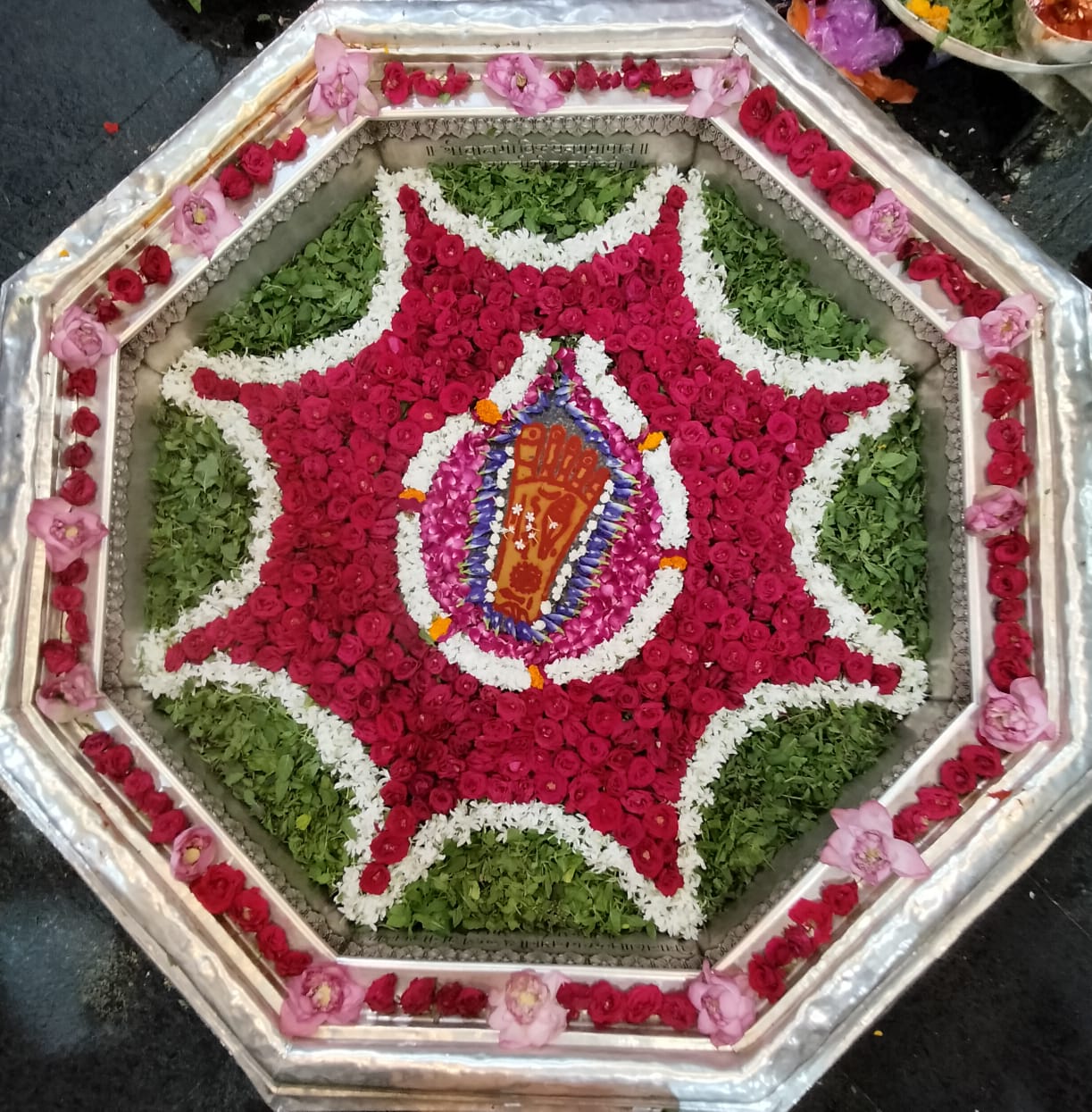
The Vishnupad Temple, located in the Gaya district of Bihar, India, is a revered Hindu temple dedicated to Lord Vishnu. Its significance is deeply rooted in religious, historical, and architectural realms, making it a pivotal site for devotees and scholars alike.Religious Significance: The temple is named after the footprint (pad) of Lord Vishnu, which is enshrined in the temple on a basalt rock, believed to be where Vishnu killed the demon Gayasur by placing his foot on his chest. This footprint is the focal point of worship, and the temple attracts thousands of devotees who come to offer pind-daan, a ritual to honor the souls of deceased ancestors. The Vishnupad Temple is especially significant during the Pitru Paksha, a 16-day period in the Hindu lunar calendar when Hindus perform rituals for their ancestors. It is believed that performing pind-daan at this temple ensures the liberation of the soul from the cycle of birth and death, granting it eternal peace.Historical Importance: The Vishnupad Temple has a rich historical background, with references to its existence dating back to ancient scriptures and epics. It is mentioned in the Puranas and the Mahabharata, highlighting its long-standing importance in Hinduism. The present structure of the temple was built by Queen Ahilyabai Holkar of Indore in the 18th century, although it is believed that the original temple dates back much earlier. The temple’s continuous patronage by various dynasties and rulers underscores its enduring significance across different historical periods.Architectural Marvel: Architecturally, the Vishnupad Temple is an exquisite example of the Nagara style, characterized by its lofty spires (shikharas) and intricate carvings. The temple stands on the banks of the sacred Falgu River, adding to its serene and spiritual ambiance. The central sanctum houses the footprint of Vishnu, surrounded by an octagonal pavilion supported by beautifully carved pillars. The intricate sculptures and motifs adorning the temple walls depict scenes from Hindu mythology, showcasing the artistry and craftsmanship of the era.Cultural Impact: The Vishnupad Temple is not just a religious landmark but also a cultural hub. It has inspired numerous literary and artistic works over the centuries, becoming a symbol of the region’s rich cultural heritage. The temple's festivals, rituals, and fairs attract pilgrims and tourists from all over India and beyond, fostering a sense of community and cultural exchange.Conclusion: In summary, the Vishnupad Temple in Gaya district stands as a testament to India's rich religious traditions, historical depth, and architectural brilliance. Its significance transcends mere religious practices, embodying the cultural and spiritual ethos of Hinduism. For devotees, the temple is a sacred space where faith and tradition converge, offering solace and spiritual fulfillment. For historians and architects, it is a treasure trove of historical narratives and architectural beauty. The Vishnupad Temple, with its profound legacy, continues to be a beacon of devotion and a vital part of India's cultural landscape.
At a distance of 4 km from Gaya Junction Railway Station, and 10 km from Bodhgaya Bus Station, Vishnupad Mandir is a Hindu temple located in the city of Gaya, Bihar. It is one of the ancient sacred temples in Gaya and among the well-known places to visit as part of the Bodhgaya Tour Packages. Situated on the banks of Falgu River, Vishnupad Temple is dedicated to Lord Vishnu.According to the historical records, the existence of the Vishnupad temple goes back to the period of Samudragupta, who ruled over a vast empire during the 5th Century CE.The inscriptional source for this evidence is based on the Basarh Seal discovered in Vaishali.Further evidence is found in the Mehrauli Pillar inscription of King Chandragupta II.The inscription mentions this King as a devotee of Lord Vishnu and records the installation of 'dhvaja' or pillar of Vishnu on the Vishnupad Hill.A 9th - century inscription commemorates the dedication of a house for ascetics at Vishnupad by the Pala king Narayanapala.A record dated 1058 CE mentions that Vishvarupa, the ruler of Gaya built the Gadadhara temple, which forms part of the Vishnupad temple complex.Though the origin of the temple is unknown, the present octagonal structure was built by Rani Ahilya Bai Holkar, the queen of Indore, in 1787. The Vishnupad temple is said to be the exact site where Lord Vishnu had pressed his feet on Gayasura's body, leaving the imprint of his feet on the rocky surface. According to the legend, a demon named Gayasura attained the boon after a heavy penance. According to the boon, anyone who looked at him can attain salvation. Due to this indiscriminate action, the concept of Karma and its effect was becoming redundant. To prevent this, Lord Vishnu pushed Gayasura below the surface of the earth by placing his foot on his chest. Gayasur adjured him for food, Vishnu then said that he will not die of hunger and whoever will offer him food will get salvation. Hence, this is the reason why people go there to do 'Pind - Daan' of their loved ones. It is believed that the day Gayasur doesn't get his food will be the day of his return to the world.The imprint of Lord's foot, measuring 40 cm in length, is visible in the temple and pilgrims worship it daily. The temple's architecture is influenced by the Shikara style. The core part of the temple consists of the main shrine with a tall Vimana, 100 feet high, and a pillared Mandapa. The Shrine faces east and the interior is octagonal in shape. As the name suggests that the temple houses about 40 cm long footprint of Lord Vishnu known as Dharmasila that is enclosed by a basin made of silver plates. This footprint also has various symbols that are associated with the attributes such as conch, disc, and mace of Lord Vishnu. Also, the temple houses shrines of deities like Lord Narasimha and Lord Shiva. A special fair takes place on the premises of the temple in the month of Pitripaksha.Pitripaksha is a time when Hindus pay respects to their ancestors, especially with food offerings.During Pitripaksha, a Pind Daan by family members of the dead soul is fruitful.

The term 'Trup' represents a person's ability to bring joy and satisfaction to others. Derived from this, ‘Tarpan’ is the sacred act of offering water as a gesture of respect to God, revered sages, ancestral spirits, and humanity itself. Through Tarpan, we seek to honor and bring peace to these beings. The ritual of Tarpan is a heartfelt invocation, aiming to receive blessings and fulfillment from the Divine, our forebears, and the sacred energies called upon, bestowing peace and contentment on all who participate.
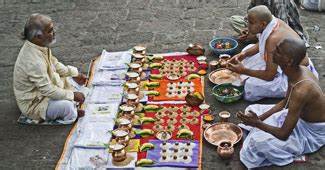
Shraddha is a reverent offering made to honor and remember departed ancestors. It is believed that the souls (Atma) of our forefathers journey to higher realms, yet remain connected to their earthly descendants. To express gratitude and seek blessings, family members offer prayers and sustenance to these departed souls. The ritual of Shraddha Karma—or simply Shradh—is traditionally observed each year on the lunar date of a parent’s passing, as per the Hindu Panchangam. This annual remembrance, also known as Samvatsarabdika or Varshabdika, strengthens the spiritual bond across generations and brings peace to the departed.
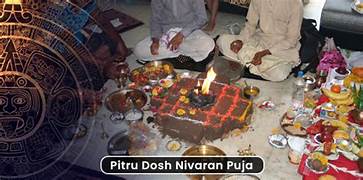
Pitru Dosh is believed to arise when certain ancestral rites—such as Shradha or Pind Daan—are left incomplete, leaving the souls of our ancestors unfulfilled. This discontent can cast a shadow of unresolved karma on the family, manifesting as issues like financial hardships, health challenges, and relationship struggles. Performing the Pitru Dosh Nivaran Puja helps in appeasing these souls, clearing the dosha from the family’s horoscope, and bringing harmony and abundance back into life.
Gaya holds a sacred reputation for performing ancestral rites, including Pind Daan and Pitru Dosh Nivaran Puja. The city is seen as a gateway to Moksha (liberation), with the Phalgu River known for bestowing blessings from Lord Vishnu. Conducting this puja here is believed to bring divine blessings, peace, prosperity, and a lasting release from ancestral karma for the family.
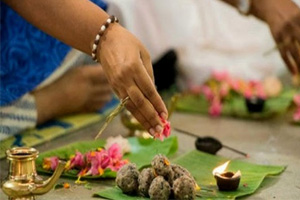
The Narayan Bali Puja is an ancient Hindu ritual, particularly revered for its power to cleanse the effects of Pitru Dosha, an ancestral curse. This puja is believed to address issues arising from untimely deaths, which can bring an imbalance to a family’s energy and impact descendants with challenges in life.
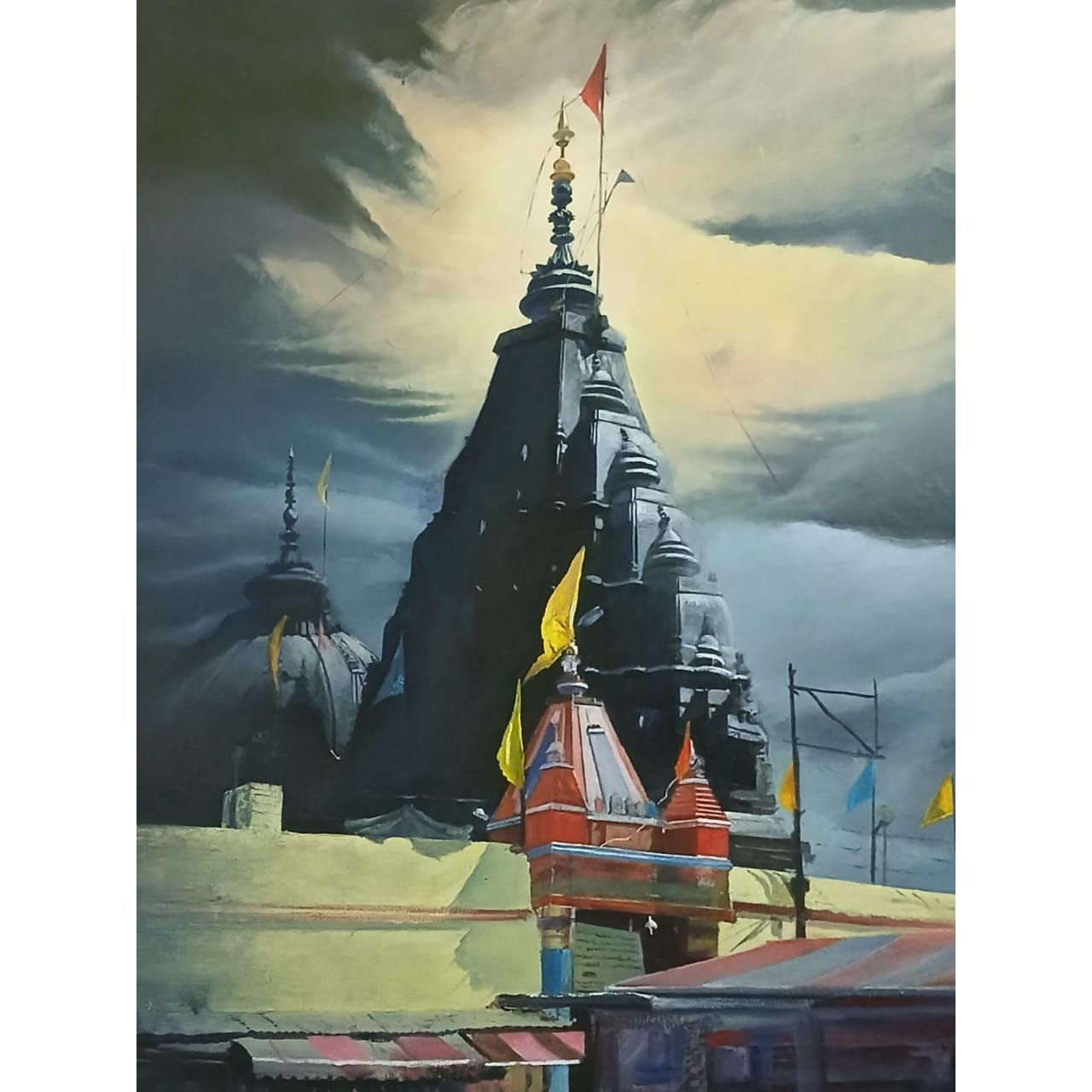
Tripindi Shraddh is a sacred ritual performed in memory of our beloved departed souls. When offerings are not made for three consecutive years, the spirits of the deceased may become restless and agitated. To soothe these restless souls, families perform this ceremony, ensuring peace and fulfillment for their ancestors. This ritual holds profound significance, addressing various challenges such as difficulties in childbirth, the effects of the evil eye, and helping ancestors attain Moksha (liberation from the cycle of rebirth).

Antyesti Karmkand, or last rites, is a vital Hindu funeral ritual performed after
death,
serving multiple purposes:
1. Purpose: These rituals help the deceased transition to the afterlife while providing
closure to the grieving family.
2. Process: The body is bathed and dressed in specific clothing—white for men and red
for women with living husbands. The eldest son or a designated mourner typically conducts the rites,
which include offering rice or sesame seeds into the mouth of the deceased and lighting the cremation
pyre.
3. Cremation vs. Burial: While cremation is the preferred method, some sects may
practice burial depending on cultural beliefs.
4. Post-Cremation: After cremation, rituals like Tarpana are performed to honor the
deceased, and families often hold a memorial meal a few days later.
5. Cultural Significance: Antyesti fosters community connections and allows
participants
to reflect on their relationships with the deceased, aiding in the grieving process.
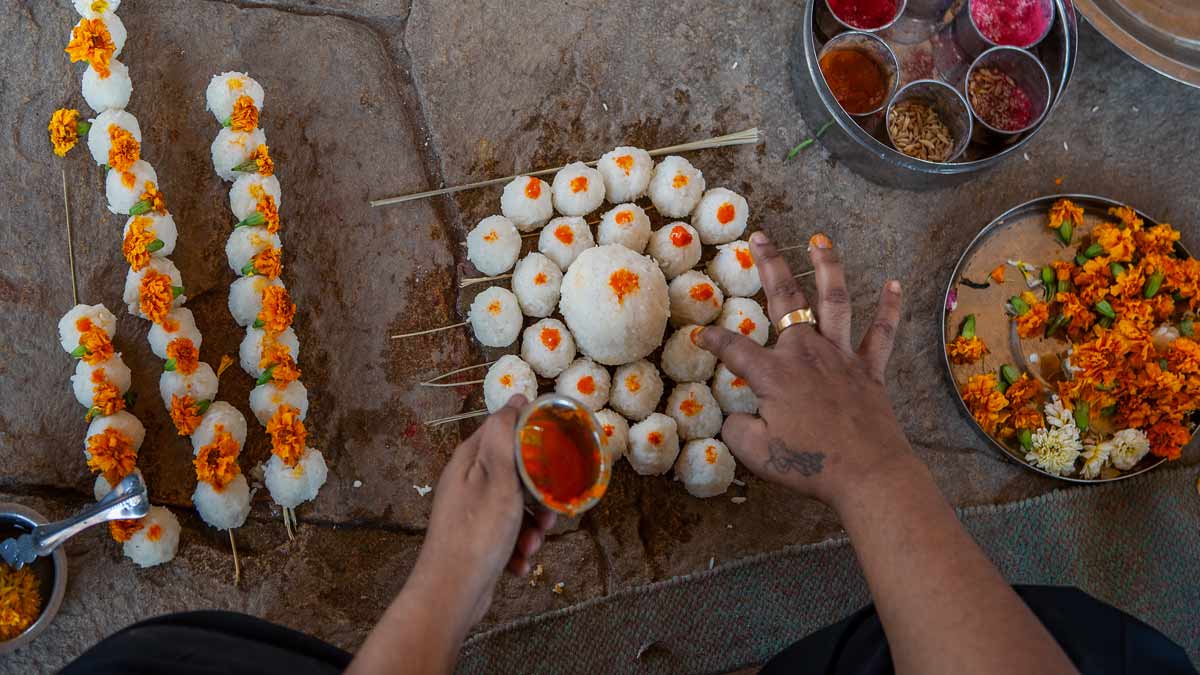
Gaya, a city deeply revered by Hindus and Buddhists alike, is a spiritual beacon in Bihar, India. Also known as Bodh Gaya, this sacred city lies about 100 kilometers south of Patna and is famously the place where Gautama Buddha attained enlightenment. For Hindus, Gaya is a vital pilgrimage destination, especially for performing rituals like Pind Daan, a solemn rite conducted to honor and bring peace to one's ancestors. Enveloped in greenery, with ancient architecture and narrow streets, Gaya offers a profound journey for those seeking to connect with tradition and spirituality. Hindi is the primary language spoken here.
Reaching Gaya is convenient, as the city is well-connected by road, rail, and air. The Mahabodhi Express, running between Delhi and Gaya, covers the distance in 16 hours. Gaya is easily accessible from other major cities, such as Kolkata, Ranchi, Varanasi, and Allahabad. Gaya’s international airport also provides seasonal connectivity to cities like Colombo, Bangkok, and Singapore, making it accessible for international pilgrims.
Ashrams like Bharat Seva Ashram and Bengali Ashram offer organized assistance to visitors performing Pind Daan. Arrangements for priests, meals, and accommodations can often be handled with a simple call a few weeks ahead of your planned visit. Hotels in Gaya can also assist in securing the services of a knowledgeable priest, ensuring that rituals are performed with the utmost respect and authenticity.
For budget-conscious travelers, ashrams like Bharat Seva Ashram provide basic accommodations without frills, making them a popular choice for pilgrims on short visits. Visitors may wish to bring personal bedding and mosquito repellents. Those seeking more comfortable amenities can choose from various hotels in Gaya, where options range from economical lodgings to high-end stays.
Beyond its spiritual appeal, Gaya offers a wealth of sites and experiences. Set on the banks of the Falgu River, Gaya is home to the famous Vishnupad Temple, where pilgrims gather to honor their ancestors. Just 14 kilometers from Gaya is Bodh Gaya, with the sacred Mahabodhi Temple and other significant Buddhist sites, drawing pilgrims from across the world. Additional sites of interest include Akshayabat, Barabar Caves, Surya Kund, and Pretshila Hill. Culinary specialties such as Sattu, litti, marua-ka-roti, baigan-bharta, and pua offer a taste of Gaya's local flavors.